Subscription conversions: Finding the balance between audience frustration and engagement
2022-04-08 12:19

Subscription conversions: Finding the balance between audience frustration and engagement-journalism.co.uk
Refining your paywall strategy is a careful balancing act, writes Madeleine White from paywall provider Poool, which has studied dozens of publishers' conversion strategies to identify key tips for success
When it comes to converting your audience into members or subscribers, it is essential to find the perfect balance between frustration and engagement. But, like many things, it is easier said than done.
Too much frustration and a user leaves your site to find content elsewhere. Leave too much content open and you may well increase engagement but fail to increase your revenues.
And, to complicate matters further, this 'perfect balance' is different for every publisher depending on the audience, content and strategy. So where to start in finding your perfect balance? Let's dissect the issue.
What causes engagement?
Although engagement is measured differently amongst publishers, one well-recognised definition of engagement is the RFV score (the combination of recency, frequency and volume):
Recency - The number of days since a user last visited your site
Frequency - This measurement can be about how often the user visits your site or how often they actually consume content.
Volume - The quantity of content consumed and interactions made with your site. In other words, are their visits of high quality?
To increase these metrics, you can consider employing engagement strategies to counterbalance any frustration felt by your user when faced with the paywall. The decision of which to use depends on your strategy, content and audience but examples include:
- Access to content, simply leaving content open to non-subscribed users (e.g. a freemium or metered approach)
- High quality content, including opening access to premium content to allow users to discover the value of your subscription offers (e.g. discovery passes or free trials)
- Interactive content, including comment sections, the ability to debate, quizzes, etc.
- Personalisation: an account space, UX features that allow the user to follow topics or an adapted home page, just like Netflix
- Soft conversion steps, including newsletter sign-ups (a great habit-forming tool) or registration (which allows you to collect first-party data to target marketing campaigns)
What causes frustration?
Quite simply, frustration is created when a user cannot achieve something they set out to do or is interrupted in their journey to do it.
For instance:
- Interruptions, such as ads and pop-ups
- Content blocks, whether that be simply the presence of a paywall or the fact that the paywall is too high up on a content, making it hard for the user to know whether the content is valuable to them
- Too many clicks/scrolls required to achieve something
- Having to fill out too many form fields
- Bad copy on the paywall or within the conversion process that does not clearly convey the value of subscribing
As you might expect, these factors counterbalance any engagement that you may have developed from the user and can dissuade them from returning frequently to consume your content.
However, without these little frustration points, your user may quite happily continue to consume content for free and never see the need to convert (limiting your ARPU - average revenue per user).
The pressure created by a paywall and premium content has an impact on both the frustration held by readers and on conversion rates. Clearly, both engagement and frustration, in the right amounts and in the right situations, are essential to successful conversion strategies.
What makes the perfect balance?
Aside from seeking to increase user engagement, there are four key things to consider and test when finding the ideal balance between frustration and engagement.
Premium content visibility
In a Poool study, analysing 75 digital publishers’ premium content strategies, we discovered a correlation between traffic on premium content and the reader-to-subscriber conversion rate, but only up to 40 per cent of premium content visibility. That means 40 per cent of your visitors would be exposed to premium content.
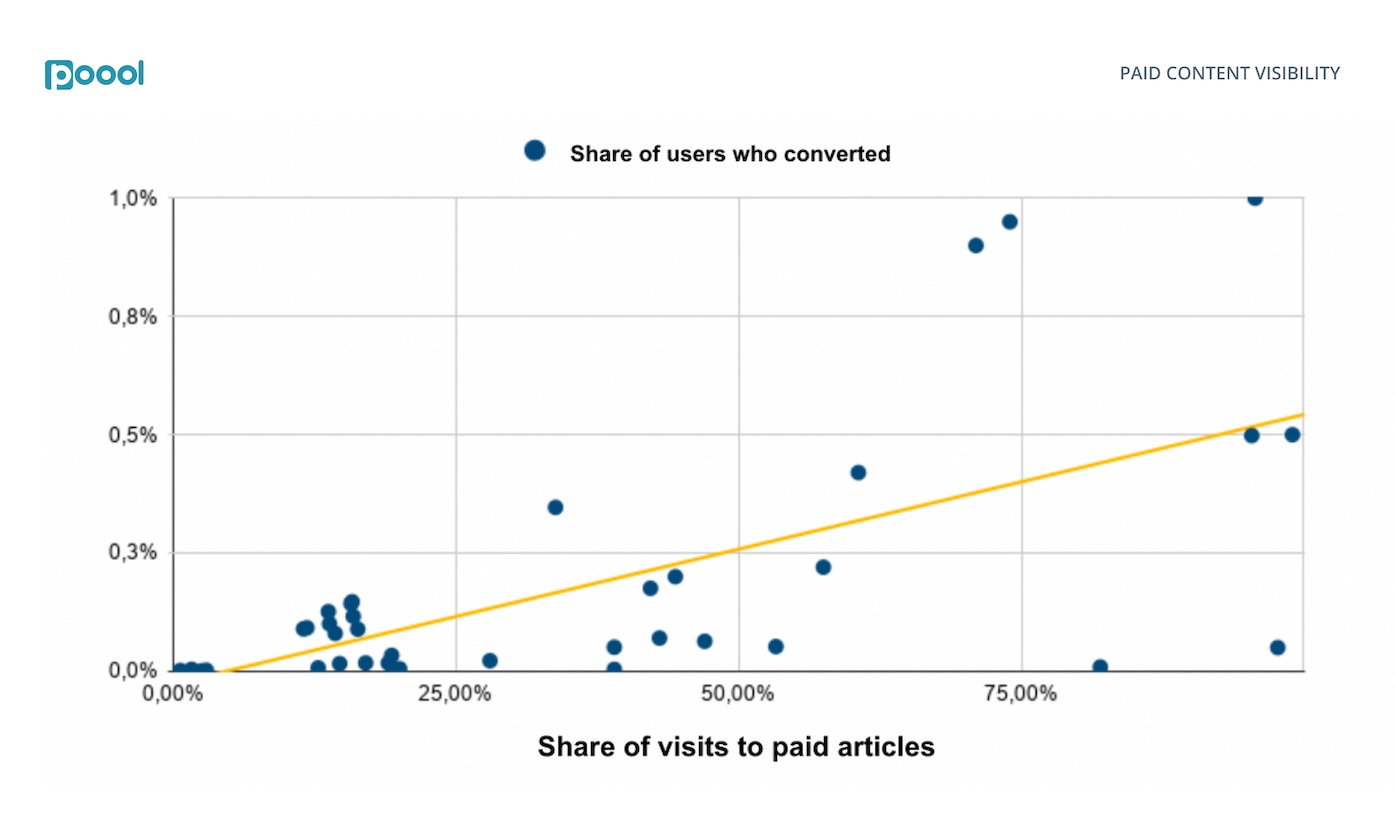
This implies that increasing the traffic share on subscriber-only content, by making this content more visible, will positively influence conversion rates. To achieve this, you do not necessarily need to produce a greater number of premium articles but increase their visibility on your website homepage, within your newsletter, on social media, etc.
As the limit of this correlation rests at 40 per cent, according to our study, we would recommend aiming for between 10-40 per cent visibility, carrying out tests to find the optimal premium content visibility for your strategy and audience.
Food and sustainability publisher Bio à la Une, for instance, has been working on premium content visibility and the team now aims for a minimum of 10 per cent, increasing this percentage over the weekend when they have the greatest number of visitors. For them, it is not simply about conversion rates, but about demonstrating to their audience that well-researched, quality content does not come without a cost.
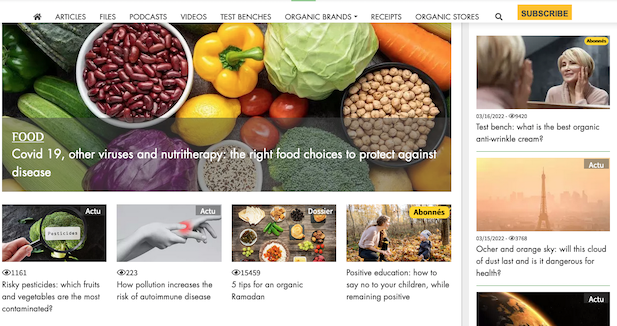
The yellow banners on Bio à la Une signal premium content to reduce frustration when a user is blocked
Paywall visibility
This refers to the visibility of your paywall on premium content. After analysing Poool clients, we found a benchmark of 30-60 per cent paywall visibility, but we do see successful publishers at extreme ends of this scale.
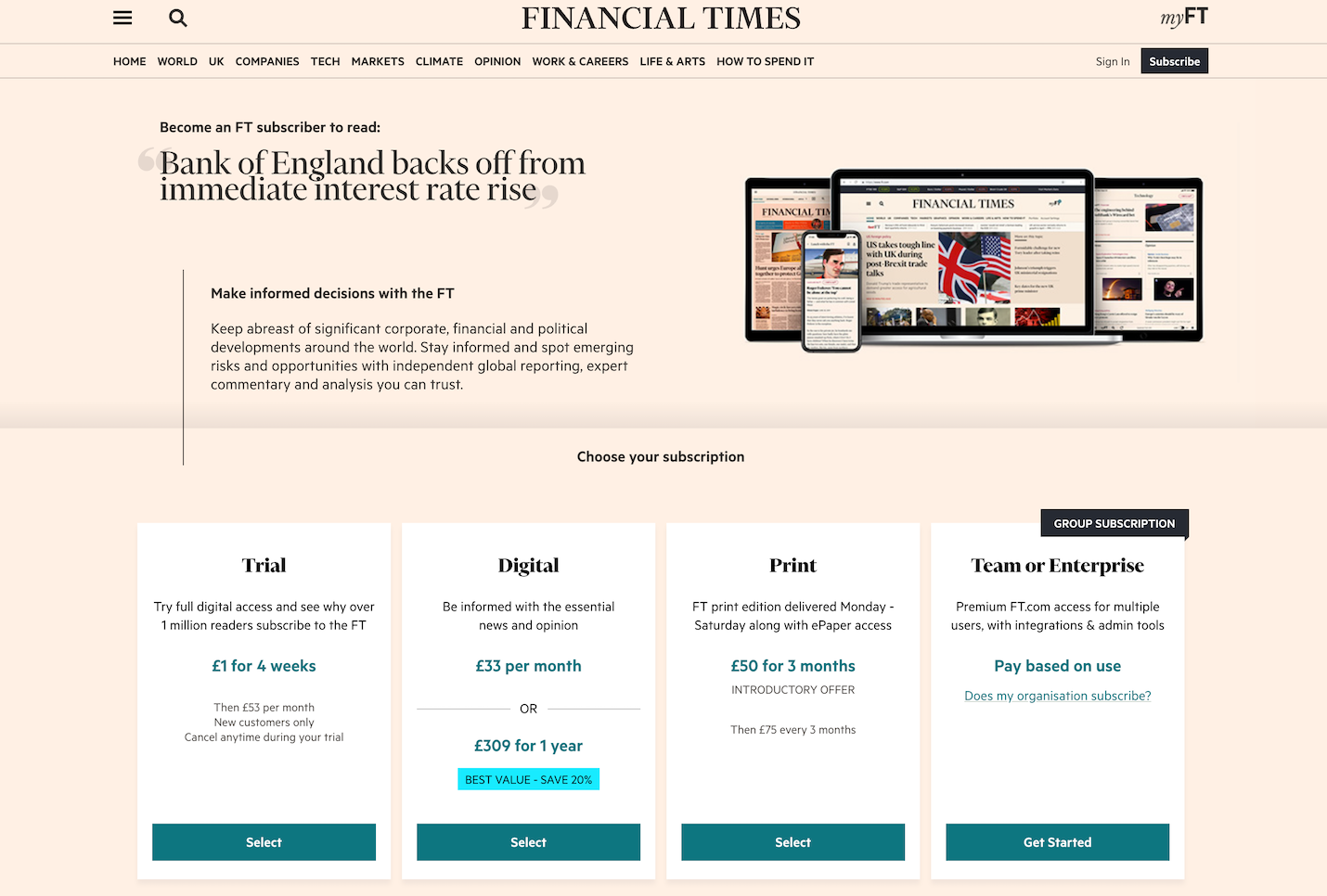
The Financial Times' full page paywall
These three successful digital publishers, for instance, all have close to 100 per cent wall visibility rate, achieved in different ways: whilst Financial Times presents a full page paywall, showing only the article title, The Washington Post employs a pop-up hard paywall and The New York Times blocks the full article with an anti-scroll paywall. This means every visitor to the site sees the paywall.
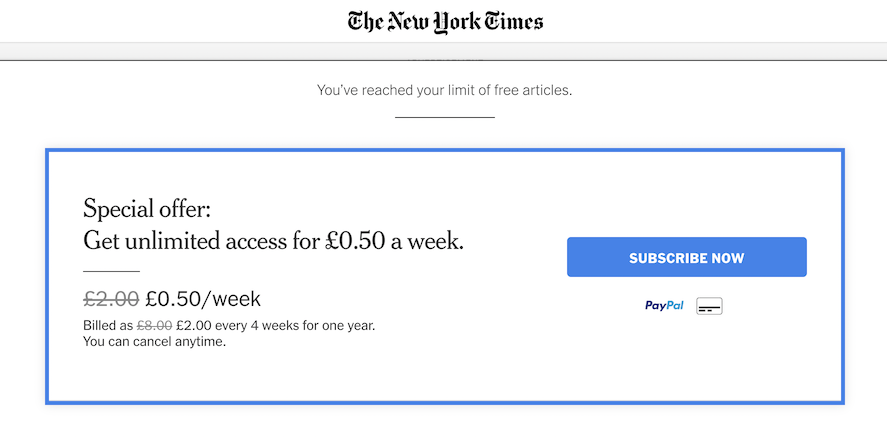
The New York Times' anti-scroll paywall
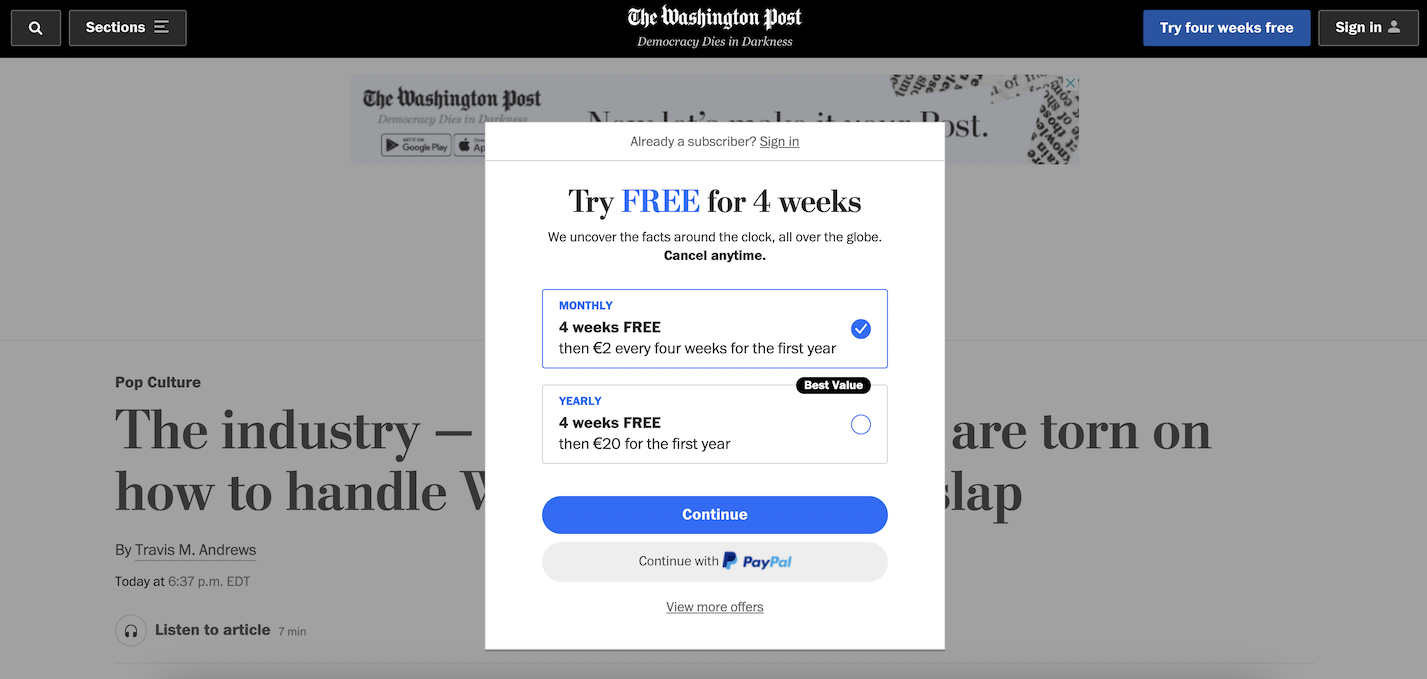
The Washington Post's pop-up hard paywall
Although these paywalls likely lead to higher click-through rates, the design does not encourage recirculation and could increase the rate of departure from the publisher's site due to user frustration.
As normal, it is important to test different wall visibilities to find the optimal percentage for your strategy.
Soft conversion strategies
Instead of jumping directly to a hard paywall, how about leading your user across stepping stones, gradually increasing their engagement and propensity to subscribe?
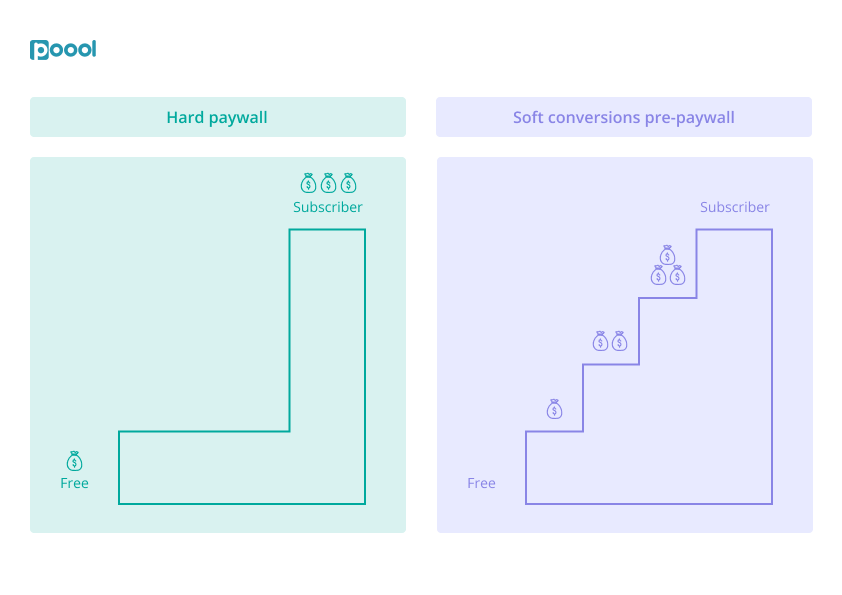
These are called soft conversion steps and can be hugely beneficial for balancing frustration and engagement.
For instance, 'newsletter walls' require newsletter inscription to access content, increasing engagement through habit-forming content being sent via email on a regular basis.
'Registration walls', another valuable conversion step, ask a user to create a free account in order to unlock content. Again, this increases engagement and collects valuable data points for personalising a user's experience, targeting ads for higher ARPU and informing your strategy to later present the paywall at the right time, in the right way.
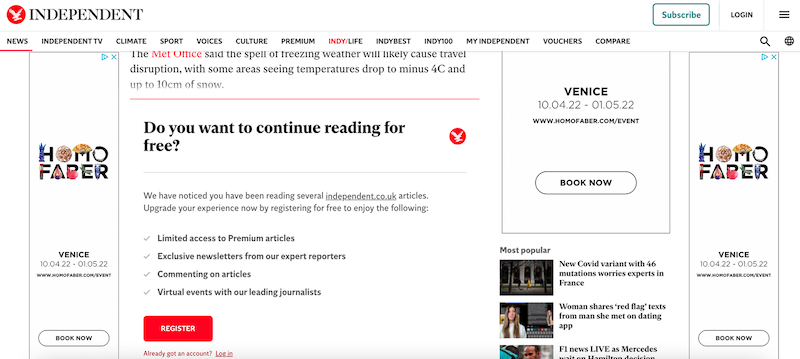
The Independent's registration wall
Even a metered paywall strategy could be considered as a soft approach, where users are offered a quota of content for free before being blocked, giving them the chance to see the value of subscribing.
Dynamic wall strategy
Perhaps the most effective strategy to employ is one that is adapted to a user's level of engagement. After all, how can you perfectly balance frustration and engagement when no two users are the same?
At Poool, we segment audiences into four engagement groups; volatiles, occassionals, regulars and fans.
Volatile users, who only visit your site once or twice a month, will be highly frustrated by a hard paywall and likely leave to find content elsewhere. However, by presenting them with a newsletter or registration wall, or allowing them to discover premium content for free, you will gradually increase their engagement and, subsequently, their propensity to convert into a subscriber when faced with the paywall.
Fans, on the other hand, are already highly engaged and can perhaps first be converted into a registered member, so as to inform your strategy, and then presented with a personalised, hard paywall to increase frustration just enough to encourage conversion.
Madeleine White is the content marketing manager at Poool, the audience conversion platform for digital publishers to convert anonymous users into leads, members and subscribers. Her work focuses on revenue, engagement and conversion strategies for digital content producers.









